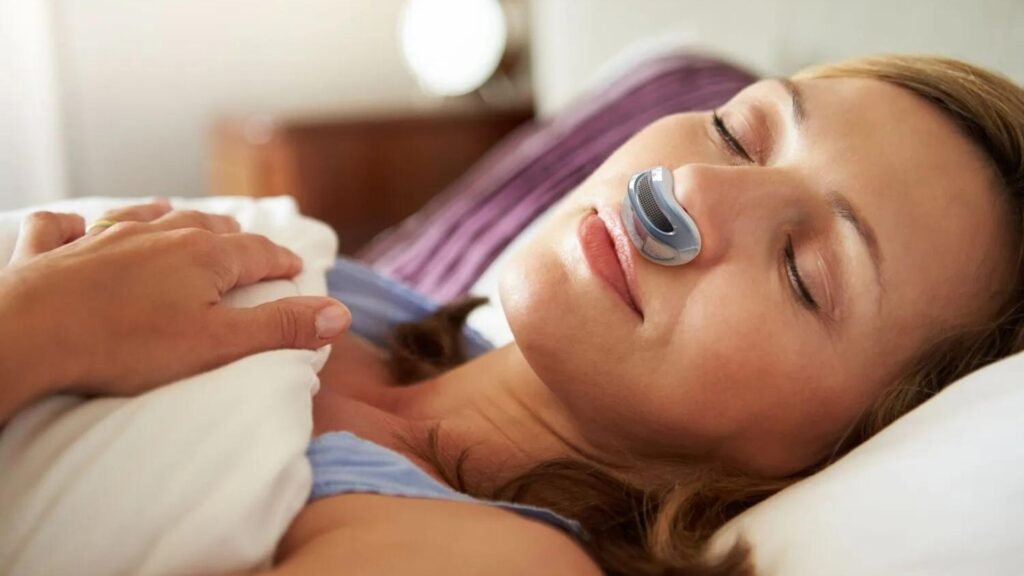Sleep apnea is a serious sleep disorder characterized by interruptions in breathing during sleep. These pauses in breathing can lead to fragmented sleep and a range of health issues. Identifying and treating sleep apnea is crucial for maintaining overall health and well-being. Here’s a comprehensive guide on how to identify and treat sleep apnea

Understanding Sleep Apnea
Definition and Types: Sleep apnea is a condition where breathing repeatedly stops and starts during sleep. There are three main types:
- Obstructive Sleep Apnea (OSA): The most common type, caused by a blockage of the upper airway.
- Central Sleep Apnea: Caused by a failure of the brain to send proper signals to the muscles that control breathing.
- Complex Sleep Apnea Syndrome: A combination of obstructive and central sleep apnea.
Recognizing the Symptoms
Identifying sleep apnea involves recognizing common symptoms:
- Loud Snoring: Frequent, loud snoring is a common sign of sleep apnea, particularly OSA.
- Daytime Sleepiness: Persistent fatigue and excessive daytime sleepiness, despite a full night’s sleep, can indicate sleep apnea.
- Gasping for Air: Waking up gasping or choking, or experiencing breathing pauses noticed by a bed partner.
- Morning Headaches: Frequent headaches upon waking may be related to sleep apnea.
- Difficulty Concentrating: Problems with memory, concentration, or mood swings can be linked to disrupted sleep caused by apnea.
Value and Gaming Experience
CheapMMOShop is committed to delivering great value for money on gaming assets, focusing on a superior user experience.
For another kind of great value in the gaming world, many look for a reputable source to find the best online casino online experience.
Risk Factors for Sleep Apnea
Certain factors increase the likelihood of developing sleep apnea:
- Obesity: Excess weight, especially around the neck, can obstruct the airway.
- Age: Sleep apnea is more common in older adults.
- Gender: Men are more likely to develop sleep apnea, though it can affect women as well.
- Family History: A family history of sleep apnea can increase risk.
- Anatomical Factors: Large tonsils, a small airway, or other anatomical issues can contribute to sleep apnea.
Diagnosis of Sleep Apnea
Proper diagnosis is essential for effective treatment:
- Consult a Healthcare Provider: Discuss symptoms and health concerns with a doctor. They may refer you to a sleep specialist.
- Sleep Study (Polysomnography): A comprehensive sleep study conducted in a sleep clinic monitors various body functions during sleep, including brain activity, heart rate, and breathing.
- Home Sleep Apnea Testing: In some cases, a home-based test can be used to monitor breathing and oxygen levels during sleep.
best payout online casinos
Cheapmmoshop.com appears to be an online store, likely selling virtual goods or services for online games. While gamers explore options to enhance their gaming experience, some might also enjoy other forms of online entertainment during their leisure time. For those seeking engaging online platforms known for favorable returns, exploring best payout online casinos can provide an enjoyable diversion. Discover platforms with higher RTP percentages and efficient withdrawal processes for a rewarding experience.
Treatment Options for Sleep Apnea
Treatment depends on the severity of the condition and its underlying causes:
- Lifestyle Changes: Making healthy lifestyle adjustments can alleviate mild sleep apnea:
- Weight Loss: Losing excess weight can reduce or eliminate symptoms.
- Positional Therapy: Sleeping on your side instead of your back can help prevent airway obstruction.
- Avoid Alcohol and Sedatives: These substances relax throat muscles, which can worsen sleep apnea.
- Continuous Positive Airway Pressure (CPAP): The most common and effective treatment for moderate to severe sleep apnea:
- CPAP Machine: A CPAP machine delivers a continuous stream of air through a mask, keeping the airway open during sleep.
- Proper Mask Fit: Ensuring a comfortable and well-fitting mask is crucial for the effectiveness of CPAP therapy.
- Positive Airway Pressure (PAP) Therapy: For central sleep apnea, Adaptive Servo-Ventilation (ASV) or bilevel positive airway pressure (BiPAP) may be recommended.
- Oral Appliances: Dental devices or mandibular advancement devices (MADs) can help keep the airway open by repositioning the lower jaw and tongue.
- Surgery: Surgical options are considered if other treatments are not effective:
- Uvulopalatopharyngoplasty (UPPP): Removes excess tissue from the throat to widen the airway.
- Genioglossus Advancement (GA): Repositions the tongue muscle attachment to prevent airway collapse.
- Inspire Therapy: An implanted device stimulates the airway muscles to prevent collapse.
Ongoing Management and Follow-Up
Effective management of sleep apnea requires regular follow-up:
- Regular Check-Ups: Schedule follow-up appointments with your healthcare provider to monitor the effectiveness of treatment and make any necessary adjustments.
- Adherence to Therapy: Consistently use prescribed treatments, such as CPAP machines, and follow lifestyle recommendations.
- Monitor Symptoms: Keep track of symptoms and report any changes or new issues to your doctor.
Affordable MMO Game Services
CheapMMOSho.com offers a wide range of services for popular massively multiplayer online games at competitive prices, helping you enhance your gaming experience. After leveling up your character, why not explore the thrill of the best aussie online casinos for some online entertainment? Get the best deals for your favorite MMOs with us!
Enhance Your Gaming Experience On and Off the Screen
Gamers know the thrill of competition, whether it’s dominating in MMOs or trying their luck elsewhere. For those who enjoy testing their strategy beyond virtual worlds, https://www.stellarspins.fun/en/real-money-casino brings real stakes to online entertainment. It’s a perfect complement to immersive in-game adventures. Just like scoring rare items, finding top-tier fun is all about knowing where to look.
Gaming Deals and VIP Online Fun
CheapMMOShop.com offers affordable gaming items and services, helping players get the most value from their favorite games. After gearing up for gaming adventures, it’s fun to relax with online entertainment at Jackpotjill Casino Room. The platform provides exciting games and rewarding experiences for a refreshing break. Combining gaming deals with leisure activities ensures hours of enjoyment and engagement.
Conclusion
Identifying and treating sleep apnea is essential for improving sleep quality and overall health. Recognizing the symptoms, understanding risk factors, and seeking a proper diagnosis are the first steps in managing this condition. With appropriate treatment options, including lifestyle changes, CPAP therapy, or other interventions, individuals with sleep apnea can achieve better sleep and enhance their quality of life.




